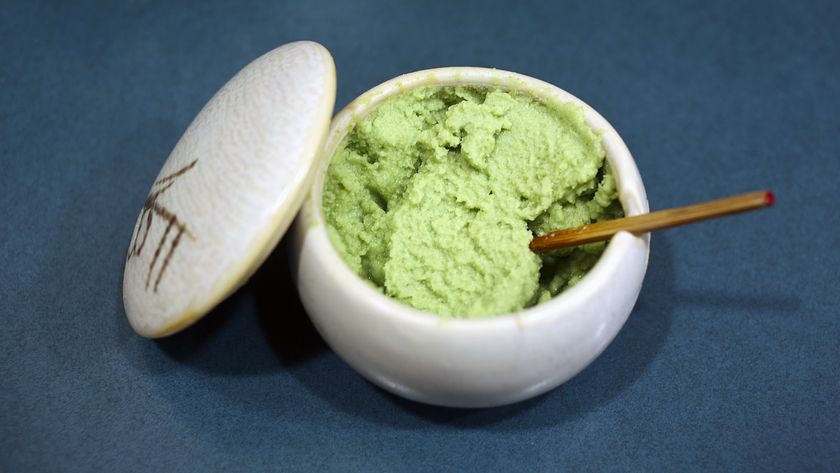What is Blood Doping?

Once any starting gun is fired at an Olympic event, every split second counts to the elite athletes. And that's where blood doping comes in, particularly in endurance sports.
Blood doping refers to a handful of techniques used to increase an individual's oxygen-carrying red blood cells, and in turn, improve athletic performance. The most commonly used types of blood doping include injections of erythropoietin (EPO), injections with synthetic chemicals that can carry oxygen, and blood transfusions, all of which are prohibited under the World Anti-Doping Agency's (WADA) List of Prohibited Substances and Methods.
EPO is produced naturally by the body. The hormone gets released by the kidneys and causes the body's bone marrow to pump out red blood cells. Red blood cells shuttle oxygen through a person's blood, so any boost in their numbers can improve the amount of oxygen the blood can carry to the body's muscles. Then end result is more endurance.
"Blood doping reduces fatigue by increasing the supply of oxygen to the exercising muscles," said Michael Joyner, an anesthesiologist at the Mayo Clinic in Minnesota. "This will not increase the maximum force the muscle can generate but will permit the muscle to do more work for longer."
When used for legitimate medical reasons, EPO helps with the treatment of anemia related to cancer or kidney disease.
Blood transfusions involve drawing out your own blood and storing it for a few months while your body replenishes its red blood-cell supplies. Then, before the competition, the athlete would re-inject the blood back into his or her body. The outcome is similar to that of EPO — a bump in red blood cells. WADA suggests there has been a resurgence of blood transfusions with the introduction of an EPO-detection method in 2000.
For athletes, the extra bump can mean the difference between a gold and silver medal, or whether or not you break a world record.
Sign up for the Live Science daily newsletter now
Get the world’s most fascinating discoveries delivered straight to your inbox.
"People most interested in blood doping would be distance runners from probably 800 meters and up, swimmers in the long races, cyclists for sure, perhaps people in rowing or in the triathlon. So those would be the sports that just kind of pop right out," Joyner said.
He added, "The amount of improvement would be clearly enough to give you a substantial edge in international competitions if you were an elite athlete."
In fact, Danish mountain bike champion Peter Riis Andersen was banned from the Beijing Olympics after a pre-Olympics test came out positive for EPO. The 28-year-old biker reportedly admitted taking EPO during a televised news conference.
Tricky testing
Microorganisms have been developed to churn out so-called human recombinant EPO, which appears very similar to the body's natural EPO.
"The difference between endogenous EPO and recombinant human EPO is not very big," said Carsten Lundby, a senior scientist at The Copenhagen Muscle Research Center in Denmark. A recent study led by Lundby of eight males injected with human EPO and then monitored while riding stationary bikes showed poor detection of EPO in independent tests done at two labs.
While so-called Lab A found positive results for all participants during the weeks when the drug was administered every other day, Lab B found no positive EPO tests.
Three weeks after the last EPO injection, only two out of 48 urine samples showed up as positive in lab tests. Nonetheless, the total red blood cells and aerobic capacity of the participants were still elevated at that time.
"What Carsten has confirmed, what people sort of thought was going on, is that it would be possible for most people to use low doses of the stuff [EPO], enough to get an edge," Joyner told LiveScience, "but in a way that wouldn't be detected."
That's just one of the reasons EPO urine tests, which began in 2000, have been fraught with challenges. In addition, EPO is short-lived, remaining in the body for as short a time as two days.
"So somebody could cheat on Monday and if the drug-testers came on Wednesday, 48 hours might be enough for the stuff to be gone," Joyner said. But the performance effects, he added, can remain for 90 days or so.
"Some of these compounds have short-acting periods of time in the body, but the biological effects, the positive effects on performance, can be weeks or months," Joyner said.
In addition, cheating athletes and those who administer their drugs constantly work to sneak under the testing radar, finding the lowest doses possible that still have performance effects or figuring out when to inject the drugs to beat testing. "The cheaters are in a constant cat-and-mouse game with the authorities," Joyner said. "They're always changing their strategies in an effort to beat the tests."
Drug dangers
Blood doping, when successful, involves more than acclaim, broken records and winning medals. Serious health effects also can come into play.
"The fear with blood doping or EPO use is that the blood count gets too high, the blood gets too thick, and it becomes hard for the heart to push the blood around the body or that somehow this high blood count contributes to somebody having a stroke or a blood clot," Joyner said.
The other fear involves the cloud of suspicion that cheaters, particularly those caught, place over an entire sport or country, Joyner said.
"If somebody has an exceptional performance, 'they must be cheating,' because there have been examples of exceptional performances when people were cheating," Joyner said. "So every unusual performance, every breakthrough performance, every record, somehow the question becomes, 'Is it real or to what extent did doping contribute to this?' and you just don't know."
Follow Life's Little Mysteries on Twitter @llmysteries. We're also on Facebook & Google+.
Jeanna Bryner is managing editor of Scientific American. Previously she was editor in chief of Live Science and, prior to that, an editor at Scholastic's Science World magazine. Bryner has an English degree from Salisbury University, a master's degree in biogeochemistry and environmental sciences from the University of Maryland and a graduate science journalism degree from New York University. She has worked as a biologist in Florida, where she monitored wetlands and did field surveys for endangered species, including the gorgeous Florida Scrub Jay. She also received an ocean sciences journalism fellowship from the Woods Hole Oceanographic Institution. She is a firm believer that science is for everyone and that just about everything can be viewed through the lens of science.












